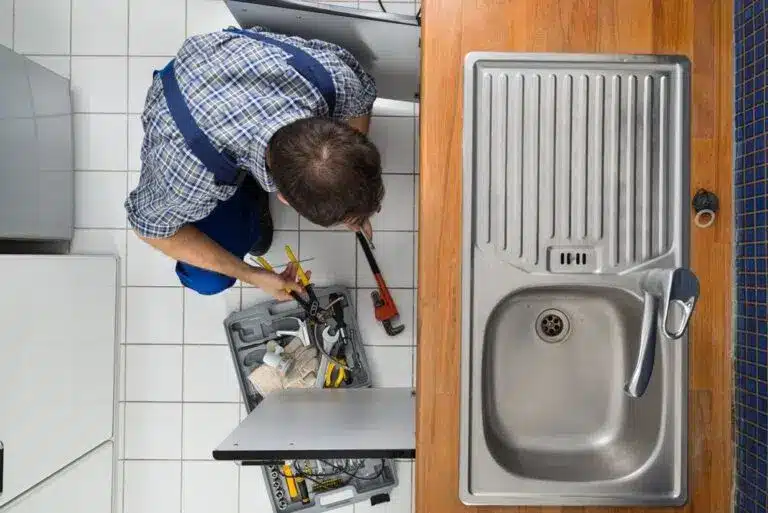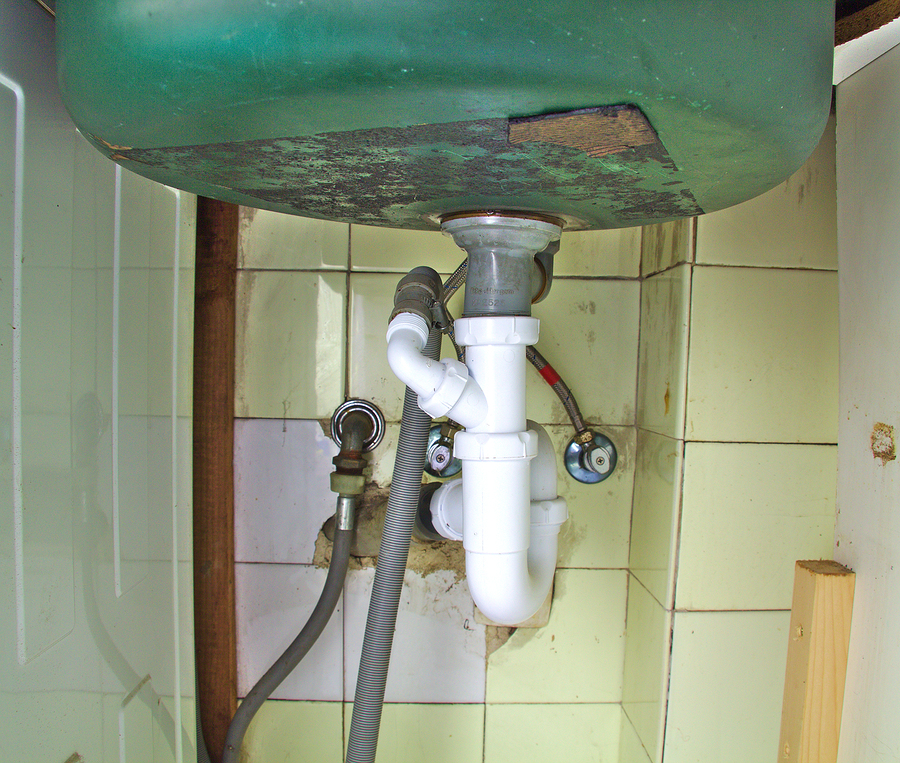Simple Steps to Stop a Leak in Your Garbage Disposal
Simple Steps to Stop a Leak in Your Garbage Disposal
Blog Article
Are you currently trying to find suggestions concerning Garbage Disposal Leaking From Bottom?

Garbage disposals are essential kitchen area devices that aid in throwing away food waste successfully. Nevertheless, a dripping garbage disposal can be a discouraging and unpleasant trouble to manage. Luckily, numerous leaks can be fixed quickly with a couple of easy actions. In this post, we will certainly discuss just how to deal with a leaking garbage disposal effectively.
Introduction
Garbage disposals are set up under kitchen sinks and are designed to shred food waste into smaller pieces, permitting it to go through the plumbing system conveniently. While these tools are generally reputable, leakages can happen with time due to deterioration, loose links, or damages to the device.
Usual Reasons For Leakages in Garbage Disposals
Worn Seals and Gaskets
Seals and gaskets play a crucial duty in avoiding water from dripping out of the garbage disposal. Gradually, these components can wear away, resulting in leakages around the disposal unit.
Loose Connections
The connections between the waste disposal unit and the pipes system can come to be loose in time, causing water to leakage out throughout procedure.
Splits or Holes in the Disposal System
Physical damages to the waste disposal unit, such as splits or holes in the real estate, can additionally lead to leaks.
Recognizing the Source of the Leak
Prior to attempting to take care of a leaking waste disposal unit, it is necessary to recognize the source of the leakage. This can commonly be done with aesthetic inspection or by conducting straightforward examinations.
Visual Evaluation
Inspect the garbage disposal unit carefully for any kind of indicators of water leak. Pay very close attention to locations around seals, gaskets, and connection points.
Evaluating for Leakages
One method to check for leaks is by running water via the disposal unit and checking for any kind of visible signs of leak.
Devices and Products Needed for Taking Care Of a Leaking Garbage Disposal
Before beginning the repair process, gather the necessary tools and products, including a screwdriver, flexible wrench, plumber's putty, replacement seals or gaskets, and epoxy or patching product for repairing splits or holes.
Step-by-Step Guide to Repairing a Leaking Garbage Disposal
Turn Off the Power
Before attempting any kind of repairs, make certain that the power to the waste disposal unit unit is turned off to avoid the threat of electrical shock.
Situate the Leakage
Identify the precise area of the leak and identify the reason.
Tighten Links
Make use of a wrench to tighten any type of loosened connections between the disposal unit and the pipes system.
Replace Seals or Gaskets
If the leakage results from used seals or gaskets, eliminate the old parts and change them with brand-new ones.
Patching Cracks or Openings
For fractures or holes in the disposal device, use epoxy or click here an appropriate patching material to seal the broken area.
Checking the Garbage Disposal After Fixing
Once the fixing is complete, check the waste disposal unit by running water via it to make certain that the leak has actually been settled.
Preventive Maintenance Tips to Prevent Future Leaks
To stop future leaks, it is necessary to do normal upkeep on your waste disposal unit. This includes maintaining it tidy, staying clear of placing non-food things or tough objects down the disposal, and regularly looking for leakages or various other issues.
Conclusion
Finally, fixing a leaking waste disposal unit is a reasonably straightforward procedure that can be completed with standard devices and materials. By adhering to the actions outlined in this article and exercising preventive maintenance, you can keep your waste disposal unit in good working condition and prevent costly repair work in the future.
HERE’S HOW TO FIX YOUR GARBAGE DISPOSAL
WHAT TO DO IF SOMETHING IS STUCK IN YOUR GARBAGE DISPOSAL
If the impeller won’t turn, there’s probably something stuck in the disposal. It could be a steak bone or peach pit, although plumbers report pulling all sorts of inappropriate objects out of disposals, such as bottle caps or aluminum foil. Make sure power to the disposal is off, and look inside to see if you can see the source of the jam.
Never stick your fingers in a disposal. Pull out anything you see with tongs or pliers.
If the disposal still won’t work, it may be time to call a plumber or consider buying a new disposal. GEM Plumbing & Heating is here for all of your garbage disposal needs.
WHAT TO DO IF YOUR GARBAGE DISPOSAL DRAIN IS CLOGGED
Take everything out from underneath your sink and put a bucket or other container under your disposal to catch any water that drains out. Disconnect your disposal from the power supply. If it’s plugged into a wall outlet, unplug it. If it’s hardwired into an electrical box, go to the electrical panel and turn off the breaker for the disposal. Pour ¼ cup of baking soda into the drain, followed by ½ cup of white vinegar. Give the solution a few minutes to fizz and do its work. Look into the disposal with a flashlight to see if you can see an object that might be causing the clog. If you see it, remove it using tongs or pliers. MORE TIPS ON DEALING WITH A CLOGGED GARBAGE DISPOSAL
Never use drain cleaner in a garbage disposal. It can damage the plastic parts inside the disposal. You can also be splashed with the caustic liquid while working to clear the clog. Beware! Never stick your fingers into a garbage disposal. Trust us — not a good idea. In many instances, your dishwasher drains through your garbage disposal. This allows the disposal to grind any large food particles that may be drained out of your dishwasher. There are some jurisdictions, however, where the plumbing code prohibits such a connection. WHAT TO DO WHEN YOUR DISHWASHER DRAINS THROUGH THE DISPOSAL
Run some water in the sink so your plunger has at least a ½-inch of water to create a seal and plunge vigorously up and down several times. You may need to repeat this several times. Run hot water down the drain to clear any residue that remains.

We hope you liked our piece about Why Is . Thank you so much for taking a few minutes to read through our piece of content. In case you liked our blog posting if you please don't forget to share it. I am grateful for your time. Visit again soon.
Or Book Technician Here Report this page